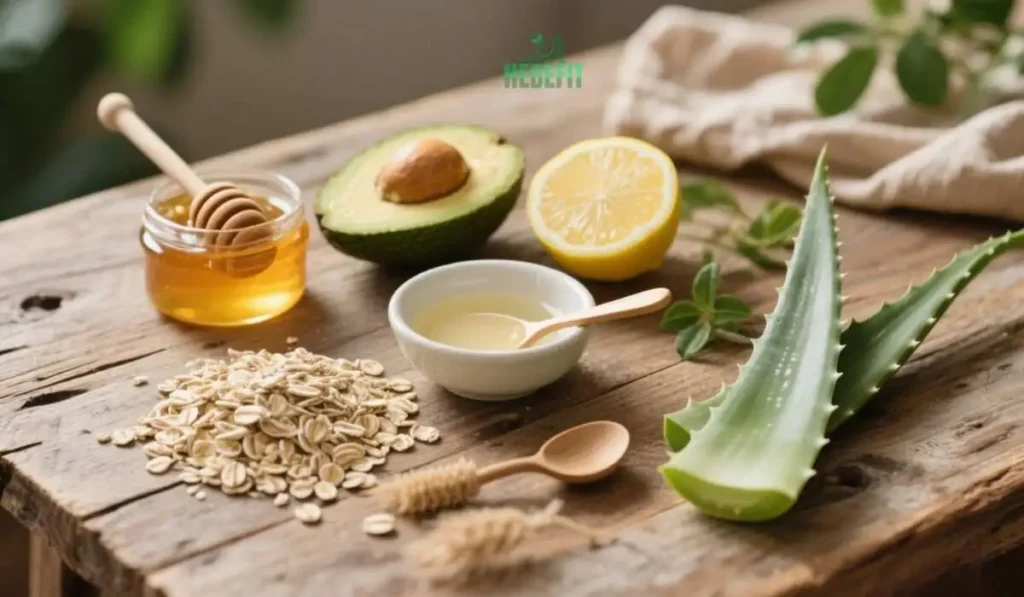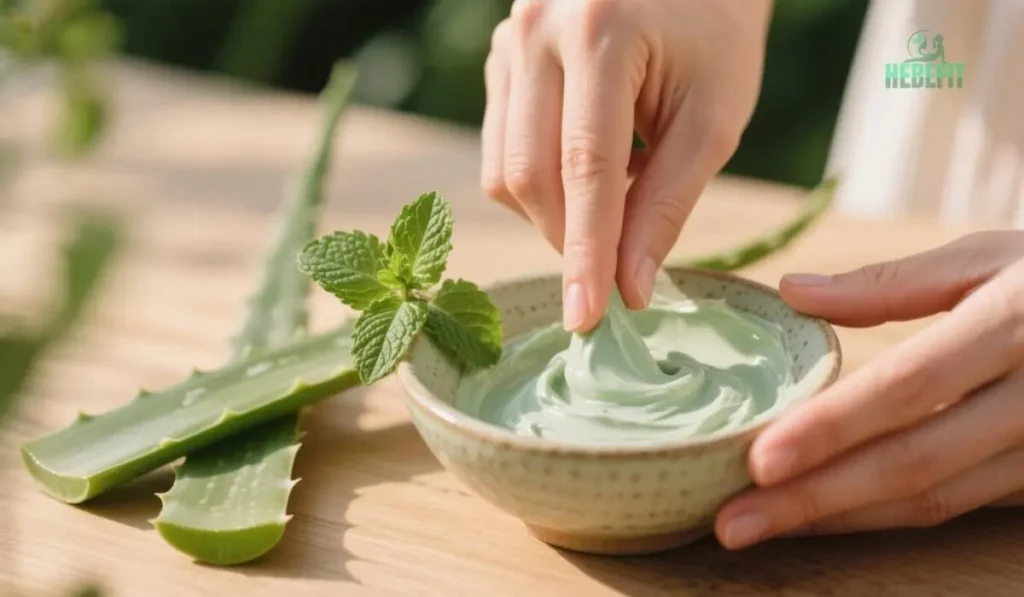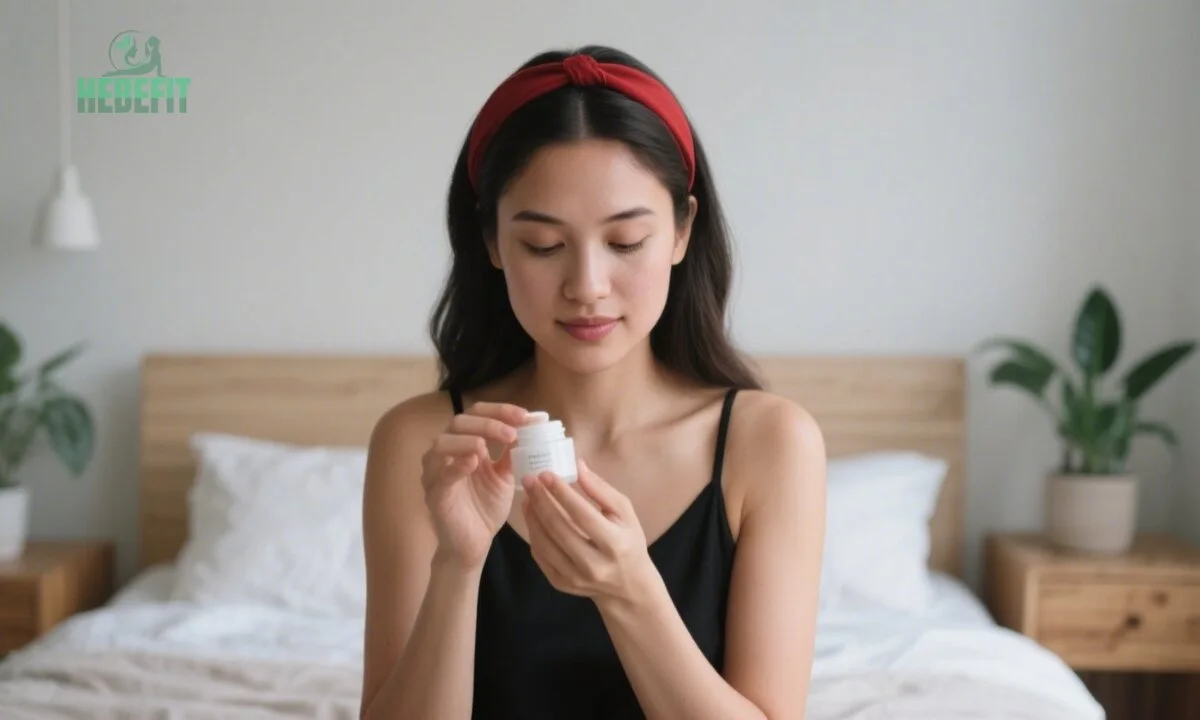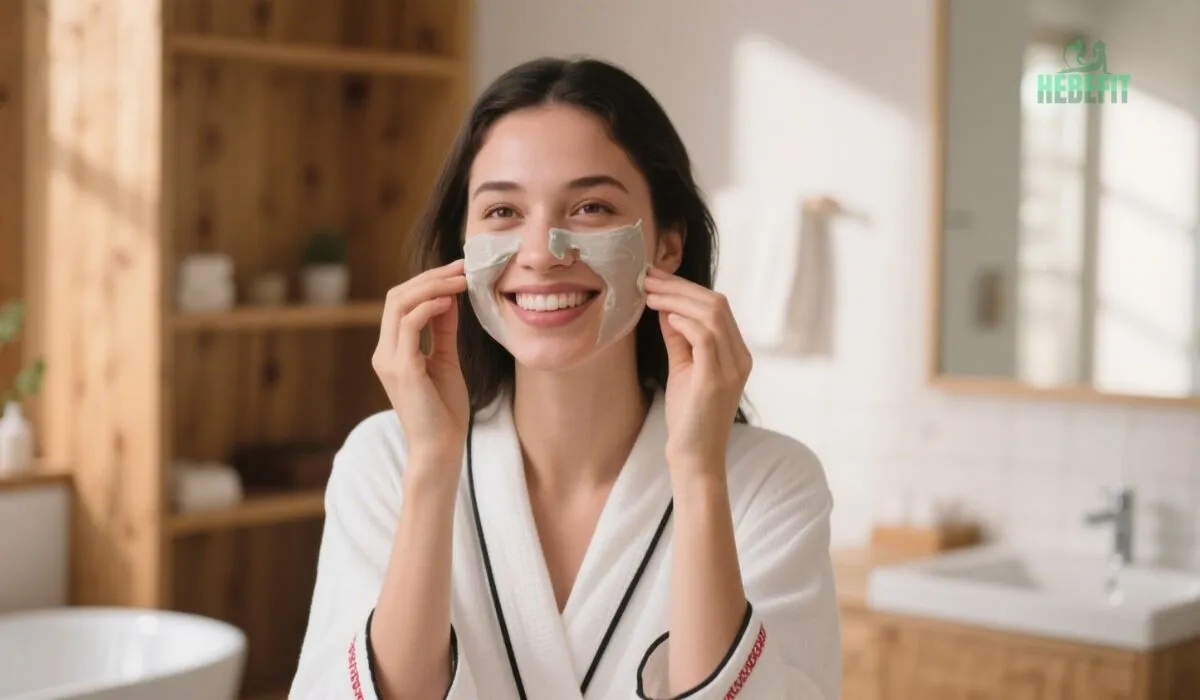Ever wondered if you could achieve that coveted healthy glow without breaking the bank or slathering your skin with mysterious chemicals? Well, you’re in the right place! The world of natural skin care homemade solutions is booming and for good reason. Embarking on a journey with natural skin care homemade recipes means taking control of what goes onto your skin, often using simple, wholesome ingredients you might already have in your kitchen. This guide is your first step towards understanding and embracing the power of natural skin care homemade for a healthier, happier complexion. Let’s dive in!

What Exactly is Natural Skin Care Homemade?
At its heart, natural skin care homemade refers to the practice of creating your own skincare products using ingredients sourced directly from nature. Think fruits, vegetables, herbs, oils, clays, and other botanical extracts.
Defining the Core Concept
It’s about moving away from complex, synthetic formulations found in many commercial products and embracing simplicity and purity. When you opt for natural skin care homemade, you’re essentially becoming your own beauty alchemist, mixing and matching ingredients to suit your unique skin needs. This means no harsh sulfates, parabens, artificial fragrances or unpronounceable chemicals – just wholesome goodness.
Beyond the Kitchen: Ingredients You Can Trust
While many ingredients can be found in your pantry (like honey, oats, or yogurt), others might come from health food stores or reputable online suppliers. These include:
- Carrier Oils: Jojoba, almond, coconut, olive oil
- Essential Oils: Lavender, tea tree, chamomile, frankincense (always use diluted!)
- Clays: Bentonite, kaolin, rhassoul
- Butters: Shea, cocoa, mango
- Botanicals: Dried herbs like calendula, chamomile, rose petals
- Other Goodies: Aloe vera gel, witch hazel, apple cider vinegar
The key is transparency – you know exactly what’s in your products because you put it there!
Why Do We Need to Know About Natural Skin Care Homemade?
In a world saturated with beauty products promising miracles, understanding the “why” behind natural skin care homemade is crucial. It’s not just a trend; it’s a conscious choice for your skin and overall well-being.
The Downside of Conventional Products
Many store-bought skincare products contain a long list of synthetic ingredients. While some are harmless, others can be potential irritants, allergens, or endocrine disruptors. Over time, constant exposure can lead to:
- Skin sensitivity and redness
- Dryness or excessive oiliness as the skin’s natural balance is disrupted
- Clogged pores and breakouts
- Premature aging due to chronic inflammation
Moreover, the environmental impact of manufacturing and packaging these products can be significant.
The Upside of Going Natural
Turning to natural skin care homemade offers a refreshing alternative. Here’s why it’s gaining so much traction:
- Ingredient Control: You have complete power over what you apply to your skin.
- Gentler Formulations: Natural ingredients are often milder and less likely to cause irritation, making them ideal for sensitive skin.
- Cost-Effective: DIY skincare can be significantly cheaper than high-end brands.
- Eco-Friendly: Less packaging, fewer synthetic chemicals, and often locally sourced ingredients mean a smaller environmental footprint.
- Customizable: You can tailor recipes to perfectly address your specific skin concerns, whether it’s dryness, acne, or aging.
And for those of you interested in holistic well-being, you might find that the principles of natural skincare align beautifully with other natural approaches, like using a natural hair mask for damaged hair. The philosophy is the same: harness the power of nature for visible results! HebeFit is all about embracing these natural solutions for a healthier you, inside and out.

How to Do Step-by-Step Natural Skin Care Homemade?
Ready to get started? Creating your own natural skincare routine is easier than you think! Here’s a step-by-step approach, complete with simple recipes for beginners.
Remember: Always do a patch test on a small area of your skin 24 hours before applying any new homemade product to your entire face, especially if you have sensitive skin.
Essential Tools & Basic Ingredients
Before you begin, gather a few basic tools and ingredients:
- Tools: Small bowls, measuring spoons/cups, spoons or spatulas for mixing, clean storage containers (small jars or bottles).
- Basic Pantry Staples: Honey (raw, unfiltered is best), oatmeal (plain, uncooked), yogurt (plain, full-fat), lemons, apple cider vinegar, coconut oil, olive oil.
Here’s a quick look at some common base ingredients and their properties:
| Ingredient | Primary Benefit(s) | Skin Type Suitability |
| Honey (Raw) | Antibacterial, Moisturizing, Healing | All, especially acne-prone |
| Oatmeal (Colloidal) | Soothing, Anti-inflammatory, Gentle Exfoliant | All, especially sensitive |
| Coconut Oil | Moisturizing, Antibacterial | Dry, Normal (can be comedogenic for some) |
| Aloe Vera Gel | Soothing, Hydrating, Healing | All, especially irritated |
| Apple Cider Vinegar | Astringent, Balances pH | Oily, Acne-prone (diluted) |
Step 1: Cleansing Naturally
Ditch the harsh soaps and embrace gentle, effective natural cleansers.
Gentle Honey Cleanser
- Ingredients: 1 teaspoon raw honey, a few drops of water (optional, for consistency).
- Instructions: Mix honey with a tiny bit of water if it’s too thick. Massage gently onto damp skin. Rinse with lukewarm water.
- Why it works: Honey is a natural humectant (draws moisture) and has antibacterial properties.
Soothing Oatmeal Cleanser (for sensitive skin)
- Ingredients: 1 tablespoon ground oatmeal (colloidal oatmeal is best, or grind rolled oats in a coffee grinder), 2 tablespoons warm water or milk.
- Instructions: Mix to form a paste. Gently massage onto damp skin. Rinse thoroughly.
- Why it works: Oatmeal calms inflammation and gently cleanses without stripping oils.
Step 2: Toning for Balance
Toners help remove any last traces of cleanser, refine pores, and restore your skin’s pH balance.
Refreshing Rosewater Toner
- Ingredients: Pure rosewater.
- Instructions: Pour a small amount onto a cotton pad and swipe over your face after cleansing. Or, pour into a spray bottle and mist lightly.
- Why it works: Rosewater is hydrating, anti-inflammatory, and has a lovely natural scent.
Apple Cider Vinegar (ACV) Toner (for oily/acne-prone skin)
- Ingredients: 1-part raw, unfiltered ACV, 3-4 parts distilled water.
- Instructions: Mix well. Apply with a cotton pad, avoiding the eye area.
- Why it works: ACV helps balance pH and has astringent properties to control oil. Always dilute ACV!
Step 3: Nourishing with Serums & Moisturizers
Serums deliver concentrated active ingredients, while moisturizers lock in hydration.
Simple Aloe Vera & Vitamin E Serum
- Ingredients: 1 tablespoon pure aloe vera gel, 2-3 drops Vitamin E oil.
- Instructions: Mix well. Gently pat onto clean, slightly damp skin.
- Why it works: Aloe vera soothes and hydrates, while Vitamin E is a powerful antioxidant.
Basic Homemade Moisturizer (Shea Butter & Coconut Oil)
- Ingredients: 1 tablespoon shea butter, 1 teaspoon coconut oil (or jojoba/almond oil for lighter feel).
- Instructions: Gently melt shea butter in a double boiler or microwave in short bursts. Stir in the coconut oil. Let it cool and solidify slightly. Whip with a fork or small hand mixer for a creamier texture (optional). Store in a clean jar.
- Why it works: Shea butter is deeply nourishing, and coconut oil provides moisture. Adjust oils based on your skin type.
Step 4: Exfoliating for Glow (1-2 times a week)
Exfoliation removes dead skin cells, revealing brighter, smoother skin underneath.
Gentle Sugar & Olive Oil Scrub
- Ingredients: 1 tablespoon fine sugar (brown or white), 1 teaspoon olive oil (or almond/jojoba oil).
- Instructions: Mix to form a paste. Gently massage onto damp skin in circular motions for about 30 seconds. Rinse well.
- Why it works: Sugar provides physical exfoliation, while oil moisturizes.
Coffee Ground Wake-Up Scrub
- Ingredients: 1 tablespoon used coffee grounds (cooled), 1 teaspoon coconut oil or yogurt.
- Instructions: Mix ingredients. Gently scrub onto damp skin. Rinse.
- Why it works: Coffee grounds exfoliate and can temporarily tighten skin due to caffeine.
Step 5: Masks for Targeted Treatment (1-2 times a week)
Face masks offer a concentrated dose of beneficial ingredients to address specific concerns.
Hydrating Avocado & Honey Mask (for dry/mature skin)
- Ingredients: ¼ ripe avocado, 1 teaspoon raw honey.
- Instructions: Mash avocado well and mix in honey. Apply to clean skin, leave for 15-20 minutes. Rinse.
- Why it works: Avocado is rich in healthy fats and vitamins; honey moisturizes and heals.
Clarifying Clay & Tea Tree Mask (for oily/acne-prone skin)
- Ingredients: 1 tablespoon bentonite or kaolin clay, 1-2 drops tea tree essential oil, enough water or witch hazel to make a paste.
- Instructions: Mix clay with liquid and tea tree oil to form a smooth paste. Apply to skin, avoiding eyes and mouth. Let it dry (about 10-15 minutes), but not crack completely. Rinse with warm water.
- Why it works: Clay draws out impurities, and tea tree oil is antibacterial.
Here’s a table to help you choose ingredients for masks based on skin type:
| Skin Concern | Recommended Natural Ingredients | Example Mask Idea |
| Dryness | Avocado, Honey, Yogurt, Shea Butter, Oats | Avocado & Honey Mask |
| Oiliness/Acne | Clay (Bentonite, Kaolin), Tea Tree Oil, ACV, Witch Hazel, Lemon Juice (diluted) | Clay & Tea Tree Mask |
| Sensitivity | Oatmeal, Aloe Vera, Chamomile, Rosewater | Oatmeal & Aloe Vera Soothing Mask |
| Dullness | Papaya (enzymes), Lemon Juice (brightening), Yogurt (lactic acid) | Yogurt & Papaya Brightening Mask |
| Aging | Antioxidant-rich berries, Green Tea, Vitamin E Oil, Rosehip Oil | Berry & Green Tea Antioxidant Mask |

What are the 7+ Benefits of Step-by-Step Natural Skin Care Homemade?
Embracing a step-by-step approach to natural skin care homemade isn’t just about following recipes; it’s about unlocking a multitude of benefits for your skin, your wallet, and even the planet.
Benefit 1: Kinder to Your Skin
This is perhaps the most significant advantage. Natural ingredients are generally gentler and less likely to cause irritation, redness, or allergic reactions compared to synthetic chemicals found in many commercial products. Your skin will thank you for the break!
Benefit 2: Kinder to Your Wallet
High-quality skincare can be expensive! Making your own products from readily available ingredients can drastically reduce your beauty budget. A jar of honey or a bag of oats can yield multiple treatments for a fraction of the cost of a single store-bought item.
Benefit 3: Kinder to the Planet
DIY skincare often means less packaging waste (you can reuse your containers) and fewer harsh chemicals being washed down the drain and into our waterways. Choosing organic or locally sourced ingredients further reduces your environmental impact.
Benefit 4: Full Ingredient Control & Transparency
You know exactly what’s going onto your skin. No more deciphering long, confusing ingredient lists filled with parabens, sulfates, phthalates, or artificial fragrances. This is especially crucial for those with sensitivities or allergies.
H3: Benefit 5: Highly Customizable for Your Unique Needs
Your skin is unique, and so are its needs. Natural skin care homemade allows you to tailor recipes perfectly. Oily T-zone but dry cheeks? Need extra hydration in winter? You can adjust ingredients and concentrations to create products that work specifically for you.
Benefit 6: A Fun, Creative, and Rewarding Hobby
There’s a certain joy and satisfaction in creating something beneficial with your own hands. Experimenting with different ingredients and scents can be a relaxing and enjoyable pastime. It’s like a mini spa day, every day!
Benefit 7: Potential for Better Long-Term Results
By nourishing your skin with wholesome, natural ingredients and avoiding harsh chemicals, you’re supporting its natural ability to heal and regenerate. This can lead to healthier, more resilient and visibly radiant skin over time.
Bonus Benefit: Connecting with Nature
Using ingredients derived from plants, fruits, and the earth helps foster a deeper connection with the natural world, reminding us of the potent healing powers it holds.
Integrating with Your Existing Routine & HebeFit Resources
Starting with natural skin care homemade doesn’t mean you have to throw out everything you currently use (unless you want to!).
A Note for Beginners
Begin by incorporating one or two homemade products into your routine, perhaps a weekly face mask or a daily cleanser. See how your skin responds and gradually introduce more if you wish. Consistency is key!
Connecting Skin Health to Overall Wellness
At HebeFit, we believe that true beauty and health come from a holistic approach. What you put on your body is just as important as what you put in it. Exploring natural skincare aligns perfectly with a lifestyle focused on clean eating, fitness, and overall well-being. Your skin is your body’s largest organ, and caring for it naturally contributes to your overall vitality.
Curious About Natural Hair Care Too?
If you’re loving the idea of natural skincare, you might also be interested in extending this philosophy to your hair care. Many of the same principles apply! If you’ve ever searched for a “natural hair mask for damaged hair,” you’ll find that HebeFit aims to be your go-to resource for all things natural beauty and wellness. Explore our other articles for more tips on harnessing nature’s power from head to toe!
Final Thoughts
Embarking on your natural skin care homemade journey is an empowering step towards healthier skin and a more sustainable lifestyle. By understanding the ingredients and how they benefit your skin, you can create a personalized routine that is effective, affordable, and enjoyable. Remember to start simple, listen to your skin, and have fun with the process! The path to radiant, naturally beautiful skin is right in your hands – and possibly in your kitchen pantry!
We encourage you to explore more articles on HebeFit for further guidance on natural living, fitness, and achieving your best self, naturally.
FAQs
Is natural skin care homemade really effective?
Yes! Many natural ingredients are packed with vitamins, antioxidants, and anti-inflammatory compounds that can be very effective for cleansing, moisturizing, treating acne, and improving overall skin health. Consistency and choosing the right ingredients for your skin type are key.
How long do homemade skincare products last?
Because they don’t contain synthetic preservatives, homemade products have a shorter shelf life.
- Water-based products (like toners or masks with water/aloe): Store in the fridge and use within 1 week.
- Oil-based products (like balms or oil cleansers): Can last several weeks to a few months if stored in a cool, dark place in an airtight container.
- Dry ingredients (like scrub mixes or clay mask powder): Can last for months if kept dry.
Always make small batches and check for any changes in smell or appearance before use.
Can I use essential oils in all my homemade skincare?
Essential oils are potent and should be used with caution. Always dilute them in a carrier oil (like jojoba, almond, or coconut oil) before applying to the skin. Some essential oils can cause photosensitivity (like citrus oils) or irritation. Do your research and always patch test. A general guideline is 1-2 drops of essential oil per tablespoon of carrier oil for facial products.
What if I have very sensitive skin?
If you have very sensitive skin, it’s even more important to patch test every new ingredient and product. Start with very simple recipes with minimal ingredients. Ingredients like colloidal oatmeal, aloe vera, chamomile, and calendula are generally well-tolerated. Avoid known irritants like harsh citrus juices or undiluted apple cider vinegar.
Is natural skin care homemade safe during pregnancy?
Many natural ingredients are safe, but some essential oils and herbs should be avoided during pregnancy. It’s always best to consult with your healthcare provider before introducing new skincare products, homemade or otherwise, during pregnancy or while breastfeeding.
Can natural ingredients clog pores?
Yes, some natural ingredients, particularly certain oils like coconut oil or olive oil, can be comedogenic (pore-clogging) for some individuals, especially those with oily or acne-prone skin. If you’re prone to breakouts, opt for lighter, non-comedogenic oils like jojoba oil, grapeseed oil, or hemp seed oil.
Where can I find good quality natural ingredients?
Many basic ingredients like honey, oats, and yogurt can be found at your local grocery store (opt for organic and raw where possible). For specialized ingredients like clays, carrier oils, essential oils, and butters, look to health food stores, apothecaries, or reputable online suppliers that specialize in natural skincare ingredients.
What’s the easiest natural skincare product to start with?
A simple face mask (like honey and oatmeal) or a sugar scrub are great starting points. They require minimal ingredients and are easy to whip up, offering immediate, noticeable results like softer, smoother skin.










